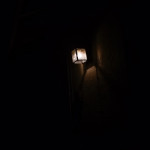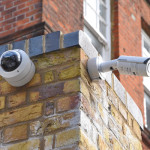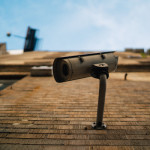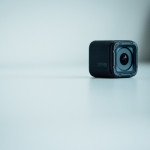Home Security Mistakes & Tips
Making mistakes when it comes to your home security can compromise your safety, leaving you vulnerable to burglary and theft. When choosing the best home security system for you, avoid making these common security mistakes and ensure that you properly safeguard your home and loved ones.
Mistake: Buying The Wrong Home Security Systems.
There is no “wrong” home security system, however, what works for one person may not work for you. This is precisely why there are various types of security systems on the market.
In order to choose the best system for you, do your research. You want to look at different reviews from reputable sources. Search the security system you are eyeing, or the type of system you’re looking for. In addition to reviews, pay attention to any complaints from real buyers that you may come across. There may be legitimate issues that you should know about before making a purchase.
Also, these are some important features you should consider when shopping for a security system:
- Remote monitoring
- Real-time notifications
- 911 & emergency services
- Input capacity
- Ease of installation
Lastly, to help you make the right decision, and possibly save you time, you should speak with a security professional. With expert knowledge and experience under their belt, a security professional will have a better idea of which type of security will best suit your needs.
Mistake: Not Testing Your Configurations.
It is rare that one home security system is enough for all your home security needs. For added protection, some components to consider may include:
- Indoor and outdoor cameras
- Motion sensors
- Smoke detectors
- Carbon monoxide detectors
- Glass break detectors
- Door and window sensors
- Freeze sensors
- Water sensors
- Driveway sensors
Of course, these are just some of the many components you may or may not want to add to your system. Whether you have one security camera or 20 different cameras and sensors, you should test all of them to ensure proper configuration and performance. For example, you may not know that your camera is poorly positioned or that your alarm system was not properly activated.
Try simulating a break-in with a friend, family member, or your pet to determine the capabilities of your home security system. Most criminals are seasoned vets so they probably know how to bypass one of more components of your system, thus having more aspects can help to ensure they are stopped.
Mistake: Lack Of/Poor Maintenance Of Home Security System.
Your security system should be maintained on a regular basis, whether it’s weekly, monthly, semi-annually or annually – do what’s best for what you need. Maintenance can involve various things such as updating software, changing batteries, changing faulty or defective parts, and more.
Professional Maintenance
Professional maintenance can be done annually or semi-annually. You may want to check if your vendor offers any maintenance packages in the service contract. If they don’t, you can enlist the services from a home security inspection company.
The services typically consist of the following:
- Repair or replace broken parts of your home security system
- Test the control panel and all other components of your home security system
- Check that signals are sent to and received by the monitoring center
Professional maintenance ensures that there’s no guesswork in handling, fixing or replacing faulty components of your system.
DIY Maintenance
Your DIY checklist should include:
- Check/change exterior lighting to ensure clearer pictures or videos for your surveillance cameras
- Simulate intrusion to check if motion sensors will detect it or trigger the right alarm
- Test your control panel if it has a test model but if your system includes remote monitoring (which it should), inform the monitoring team to avoid starting a false alarm
- The National Fire Alarm Code requires annual inspection of residential household fire systems, but you can press the test button of your smoke detector to see if it’s functioning properly from time to time
Keep these tips in mind in order to avoid these critical mistakes when shopping for a home security system.
If you’re looking for quality CCTV surveillance systems and security cameras for smart prices, feel free to browse our stock online at SecurityCamExpert.com or call 888-203-6294 to speak with an expert today! Find the latest news and updates on our Facebook, Google+, Twitter, LinkedIn, and Pinterest pages.
Low-Light Security Cameras
There’s something to be said about low-light security cameras. Because lighting conditions in different environments are not always ideal for surveillance, low-light security cameras enable us to capture respectable footage in these situations. And with new technology, the quality of low-light camera images has vastly improved.
But before you invest in low-light security cameras for your home or business, here are some important facts and tips to know to make the most of your security systems.
Here’s some important information in order to make the most of your security systems.
First and foremost, you should know the related terms you may come across:
- Low-Light
- Day/Night
- Starlight
- SenseUp
- Night Vision
- Light Finder
- Light Toucher
- Dark Finder
- Light Catcher
- Thermal Imaging
All of these terms refer to the same classification of surveillance cameras. And while some of these terms are trademarked by manufacturers, the most commonly used terms for these cameras are “low-light” and “day/night.”
How It Works
Despite the sometimes confusing terminology, the basic components remain the same for all low-light cameras: a lens and sensor and some level of image processing. And to be clear, low-light cameras are different than thermal cameras (which track heat rather than motion or images) or cameras with IR illuminators.
A majority of low-light cameras use an IR cut filter, which is a mechanical filter that sits between the lens and the sensor (CMOS chip). The name is derived from its ability to “cut out” or filter out IR illumination during the day to improve color quality. At night, as available light diminishes, it slides out of the way to allow more light to get the sensor, thus improving low-light video quality. In order to help the video quality, it is also captured in black and white. In most cameras the filter is mechanically driven by an algorithm, however, some cameras allow manual control.
Optics
Because nearly all the cameras contain IR cut filters, it comes down to the lens and the processing to set these items apart from one another. The lens transmits light to the sensor and then the data on the sensor is processed by a processor. The variance among cameras is often in the optics. You want to be sure that both the lens and the sensor are of great quality, otherwise the potential for stellar images will be wasted.
Processing
Aside from the optics, processing is an important factor in determining the best low-light camera for you. Most manufacturers employ the same OEM processor yet make their own adjustments to them. The ability to control the tuning of an image is crucial as the tuning of an image during daylight will likely not hold up at night or in complete darkness.
Pay close attention to image toning, noise suppression, and the ability to maintain color and contrast in low light as these often differentiate one camera from another.
Lux
Typical IR cameras will capture images between 1 lux and 0.1 lux, however, the latest technologies can allow .01 lux to 0.00001 lux. This means that what would have been a completely black image a few years ago now looks like a near-daytime picture thanks to new low- and ultralow-light sensors.
While this achievement is impressive, in reality, there will rarely be any situations where there is complete darkness. Some ambient light will likely be present, whether it is from street lamps, the moon, or even the stars.
Spec Sheets Vs. Live Demo
As discussed, the impressive low-light sensitivity and lux will likely be included in the spec sheets, along with other important features. However, these spec sheets often represent technical specifications as opposed to actual performance.
Instead of simply relying on spec sheets, try to find a manufacturer or company that will provide you with a live demo and comparisons. This will give you a better idea of the low-light camera’s performance and whether or not it lives up to your requirements. In addition, third party reviews can give you more insight as well.
Resolution
Just because a camera boasts a high megapixel count does not necessarily mean it will produce a better low-light image. With higher resolution and higher megapixels, each pixel becomes a smaller percentage of that sensor. For example, image the sensor has a fixed size, yet the resolution is doubled. The pixels are smaller, thus, the sensor for each pixel is also smaller, increasing the amount of sensitivity needed to maintain the same level of quality.
Lens Speed
The speed of the lens is important and investing in a fast lens and better optics is crucial. The lens determines what information reaches the sensor, and, because of this, you get what you pay for when it comes to lenses and optics.
Positioning & Distance
Proper positioning of your security cameras is critical. Focus on what you want to capture and the level of detail you need when choosing the location of your cameras.
Position surveillance cameras so that the common range of motion is moving across the field of view rather than having common movement coming toward the camera. Also, avoid bright light pointing directly at the lens – this can cause flare or “fog” on the image.
Consider the field of view in terms of distance. The level of detail from the camera is highly dictated by how close the camera is and how much it’s zoomed in.
And when it comes to distance, you want the right combination of lens and camera that factors in the distance from the area you are trying to monitor. If you need to detect motion from long distances, your best bet would be to switch to thermal cameras. Activity will be detected, however, it will be harder to determine whether it is a person or an animal.
Share your own knowledge of low-light surveillance cameras with us and your peers on Facebook, Google+, Twitter, LinkedIn, and Pinterest. To shop our selection of quality CCTV surveillance systems and security cameras, please visit SecurityCamExpert.com or call 888-203-6294 today!
Home Security Camera Placement Tips
When it comes to security camera systems, you can invest in the best, most advanced equipment, but choosing poor locations for your security cameras can render your system ineffective.
In order to choose the best placement for your surveillance cameras, you should consider the layout of your property and which areas need monitoring. Most home or business owners target high traffic areas and entryways.
Here are more helpful tips for installing your security cameras.
- The most commonly targeted entryways are the front door, back door, and first-floor windows, so be sure these are under video surveillance.
- In addition, a security camera at the front door can act as a digital peephole since you can access your live feed to see who’s at the door. You can place it above the door or window frame facing downward so that it covers the area a few feet in front of the opening. Or you can place it inside your home on the window sill overlooking the front yard.
- The type of camera will also help determine where it should be placed. Surveillance cameras with a focus range of around 45 to 75 degrees should be aimed at specific areas (ex. doorway, garage). Wide angle cameras should be placed where they can view 75 to 180 degrees without any obstructions. For security cameras that can rotate, be sure to check with the manufacturer for information on how much unobstructed viewing area is necessary.
- For surveillance cameras being installed outdoors, be sure they are waterproof, vandal proof, and have night vision capabilities in order to record overnight. Motion detection lights around the perimeter of your home can also help capture quality recordings as well as deter burglars from approaching.
- In addition, when placing security cameras outdoors, you want them to be visible yet out of reach. By installing them at least 9 feet above the ground, you decrease the likelihood of tampering, vandalism, or theft of your cameras.
Do you have any security camera placement advice or tips to share? Connect with us on Facebook, Google+, Twitter, LinkedIn, and Pinterest.
Shop our great selection of quality CCTV security cameras and surveillance systems for your home or business. Visit us online at SecurityCamExpert.com or call 888-203-6294.
CCTV Home Security Camera Systems
For the best home or business security, it’s important to choose the right CCTV security cameras. With the wide selection of security cameras to choose from, the task can seem daunting. To help ease some of the stress, here are a few things you should focus on when shopping for the perfect CCTV security system.
- Cheap ≠ Cost-Effective
You always want to invest in good quality, but sometimes the ideal option falls a little bit out of your price range. That doesn’t mean you should just go the cheap route as this can end up costing you more in the long run. Remember, more often than not, you get what you pay for. Look for reputable security companies that offer a range of options from solid brand names (ex. Hikvision, Dahua, Axis) and pay attention to warranty offerings (reputable brands usually offer up to 3 years).
- What Do You Need To Record?
Consider what you need to record in order to narrow down which specific camera functions you require. From fixed position to a range of angles, and up to 360-degree range, there’s a security camera for that. Also consider the location of your camera and the environment as there are a variety of cameras that can accommodate as well.
- Lenses Explained
Don’t understand the lens size of wide angle degree for CCTV cameras? We’ve got you covered. The rule of thumb is that for each millimeter of lens size that is how far away in meters the camera will be able to view its subject (focal length). The degree of the wide angle lens will determine the field of vision and shorten the focal length as the angle gets wider.
For example, let’s say you have a camera with 60-degree wide angle, 4mm lens. This camera will be able to effectively identify a human target at up to 4 meters, but will not have enough range to view a neighbor’s property to the left or right.
- Storage & Data
When it comes to storage and data, it will depend on the security camera and how long you will need to store your footage. IP cameras can connect to your network and enable real-time notifications as well as send data to your provider’s control center.
HD security cameras require better bandwidth and internet connection and may consume lots of data when accessed via mobile devices. They also require higher levels of storage to maintain their high resolution and quality.
- Analog Vs. HD Vs. IP?
The quality of images you need from your security cameras will often determine the type you choose. Analog cameras offer low-resolution images, and thus, decreased storage demands. HD cameras can record higher resolution images and are suitable for identifying numbers and characters. They also retain quality when digitally zoomed in. While basic analog cameras may be more affordable, if you’re looking for higher quality footage, you may want to opt for high definition or IP cameras instead.
- Positioning
If you have the best security cameras in poor locations and positions, what good are they really? Think about your property overall and begin by covering the perimeter. By securing the perimeter, you can get an early warning of any suspicious activity, allowing you to act accordingly and in a timely fashion. Also, having your security cameras in plain view but out of reach can be an effective deterrent.
- Lighting Situations
Typically, CCTV surveillance cameras can record color during the day and revert to black and white recording at night. You can supplement your day and night cameras with motion sensor lights, which will allow for sufficient lighting for better images when motion is detected. Low light cameras are another option and may not need supplemental lighting.
- Consider All Costs
When shopping for a CCTV system, you are not just buying cameras. Keep in mind the cost of other necessary items such as recorders, cables, connectors, an uninterrupted power supply, as well as the cost of labor, installation, and possible service provider fees.
- Advice From Security Professionals
Seeking advice from a security professional will give you better insight as they can assess your property and provide the best solutions to suit your needs. Here at SecurityCamExpert, we can provide site surveys and free quotes, along with quality equipment and professional installation. Feel free to contact us 888-203-6294.
You can browse our selection of quality CCTV surveillance cameras and equipment online at SecurityCamExpert.com. Connect with us on Facebook, Google+, Twitter, LinkedIn, and Pinterest!
Hidden Spy Cameras
Before, spy cameras, like the ones seen in the movies, were merely pipe dreams. The ones that were available never really lived up to the expectation. Fortunately, technology improved over time and hidden cameras became more accessible to everyone.
Thanks to the Internet of Things, Wi-Fi enabled hidden cameras and DVRs are affordable and being used more frequently. You can use these wireless hidden cameras to keep an eye on your children, watch your home while you’re on vacation, or even monitor your business remotely. Hidden spy cameras can be monitored via an app or specialized software that you may access from your smartphone or tablet.
By employing wireless hidden cameras, you can discreetly keep an eye on things. Also, they are less susceptible to tampering as they cannot be easily detected. While visible CCTV surveillance cameras are meant to deter people from wrongdoings, hidden cameras are intended to catch people in the act.
Most hidden cameras are wireless to remain inconspicuous, however, not all are truly wireless. Some are battery powered, while others may need to be prudently plugged in or attached to the electrical system in some way.
What usually confuses people when they see the term “wireless” is that it more commonly refers to the Wi-Fi connection, meaning you don’t have to connect it to any sort of landline or Ethernet cable. Most of these cameras come with their own software and must be configured to your network. IT may sound complicated, but it is no more difficult than connecting any other device to the Internet. However, some spy cameras require that users have an adequate working knowledge of IoT technology to operate them.
Before installing a hidden camera, be sure to review the laws regarding hidden cameras, surveillance, and recording.
Browse our selection of nanny cams, wireless surveillance, and hidden spy cameras online at SecurityCamExpert.com. If you have any questions or need assistance, please call 888-203-6294.
For the latest news and updates, connect with us on Facebook, Google+, Twitter, LinkedIn, and Pinterest!
Why You Should Invest In Business Surveillance Systems
As the New Year approaches, you may resolve to invest in a better business security camera system. Increasing your security measures can provide numerous benefits and will likely pay off in the long run. Here are a few ways a security system can help improve your business.
- Increase Customer And Business Safety
The presence of security cameras not only helps to deter burglars from targeting your business, but it can also bring peace of mind to your customers and employees.
- Reduce False Claims
There have been instances where employees fake an injury to claim worker’s comp, as well as customers who may make false claims against the business or employees. Security cameras can prevent these instances or provide evidence to refute these claims.
- Minimize Employee Theft
Security cameras and surveillance can positively influence behavior, resulting in employees complying with company policies.
- Avoid Loitering Around Premises
You not only want to secure the inside of your business, but protecting the perimeter is just as important. Loitering may send the wrong message to your customers, and may negatively affect your business.
- Prevent Site Littering
Aside from loitering, litter scattered around your business can damage the business reputation. You want to maintain an appealing look for your customers, and excessive litter can be detrimental.
- Replace Full-Time Security Guards
Rather than having a security guard on the grounds, you can actively monitor your premises from within or remotely.
- Track Business Traffic
Keeping track of your business traffic can improve your business success. You can identify the busiest hours and adjust your staffing accordingly. It may also give you insight to the most efficient business hours for your location.
- Tie multiple locations into one surveillance system.
If you have more than one location to monitor, an advanced security system will allow you to connect the different security systems. That way, you may be able to remotely monitor all sites from one app or system.
If you need help finding the right security camera system for your business, feel free to visit us online at SecurityCamExpert.com or call 888-203-6294 to speak with a representative. You can also connect with us on Facebook, Google+, Twitter, LinkedIn, and Pinterest.
Night Vision Cameras Vs. Thermal Cameras: Which Is Better For You?
When it comes to securing the perimeter of your home or business, you want a surveillance system that can perform in various conditions. For 24-hour monitoring, night vision cameras have been the popular solution. However, the emergence of thermal cameras has provided a more advanced solution. Learn more about the different types of night vision cameras and how thermal cameras differ from them.
Low-Light Cameras
These are also known as day and night cameras and electronically and automatically adjust lighting capture settings based on the time of day to produce optimal video images. During the day, IR cut filters are used to “cut out” IR illumination, allowing for color images. At night, the filter is removed entirely to allow the maximum amount of visible and IR light to reach the sensor and produce a monochrome image. The downside to these cameras is that they are completely dependent on lighting conditions. That is, too much light or no light at all will result in unusable images. Thus, the amount of visible light available drastically affects the image.
IR Cameras
IR cameras have a lens that is surrounded by LEDs which emit a beam of near-infrared energy to bounce off objects in its field of view. The image sensor is then able to create a picture; however, distance plays a crucial role in performance. Because the reflected IR light can only reach so far, these cameras are often limited to short-range applications.
Night Vision Cameras
Night vision goggles (NVG) and cameras capture visible light photons. As the photons penetrate a photocathode tube (which acts as an image intensifier), they are converted to amplified electrons that pass through a phosphorous screen and converts them back to visible light to create a picture (often in a greenish hue). Because these devices need just the right amount of visible light to function, they are virtually useless when there is ample light outside (ex. twilight) or in conditions where light is blocked (ex. smoke) or no light is available.
Thermal Cameras
Rather than performing based on light availability, these cameras produce video surveillance images based on the measurement of the electromagnetic heat radiation emitted by all objects and individuals. Their performance is unaffected by bright lights, complete darkness, foliage, and light fog. No matter how small, differences in heat are picked up and produce images with high contrast, which are essential to the success of video analytics and intrusion detection. These cameras may be better suited for properties which require strict perimeter security (ex. oil and gas industries, data centers, mines, power stations), and are often combined with other layers of protection (ex. fence sensors, microwaves, PTZ cameras).
Thermal cameras also boast long-range detection capabilities, thus, reducing the number of cameras needed. They can also be a good substitute for fences where fence installation is not possible. For example, ports and oil refineries have acres of water and land to secure and monitor. Thermal imaging and video analytics can create “virtual fence” and can be a more feasible and affordable solution than installing a physical barrier.
Do you use night vision cameras or thermal cameras to protect your property? Share with us on Facebook, Google+, Twitter, LinkedIn, and Pinterest.
If you need help deciding which night vision or other security cameras will best suit your surveillance needs, please feel free to contact us at 888-203-6294 or visit SecurityCamExpert.com today!
Home Security For The Holidays
The holidays are here, and whether you’re hosting the festivities or going out of town, you want to make sure your home is secure. First and foremost, if you don’t have them already, you may consider installing a home security camera system. A home security system will alert you if and when your alarm system is triggered or motion is detected, and security cameras can record pertinent footage as necessary. Should these alerts indicate criminals are on or around your premises, you can quickly contact authorities. For those of you who will be away for the holidays, an empty home is prime target. You should employ measures to make it seem like someone is home. The following are some security tips and advice to safeguard your property and avoid being targeted by thieves.
Hire a house or pet-sitter.
If possible, and if you feel comfortable with it, hire an overnight house-sitter. Before hiring, be sure to do a background check. Depending on your needs and instructions, duties may include mowing the lawn, taking the trash out, shoveling the driveway, or feeding and walking pets. If you are not comfortable with a stranger staying in your home, you may want to enlist a trusted friend or relative to either stay at your home or stop in regularly to handle these tasks.
Put your mail/newspaper subscription on hold.
Nothing screams “we’re away” more than mail and newspapers piling up. Ask your post office to hold your mail or have someone collect and sort your mail daily. If you have a newspaper subscription, pause delivery or inquire about switching to an online subscription.
Make use of curtains.
As previously mentioned, for burglars, there’s nothing more alluring than an empty home. For small windows, you want to close the curtains to shield your home from prying eyes. But you also want to keep some curtains ajar as curtains closed all day and night may look suspicious.
Set up sensors and timers for lights and sprinklers.
Along the same lines, invest in timers and sensors that can turn on and off at random intervals or that you can control remotely. These can help with the illusion that someone is home and are more cost and energy efficient than leaving your lights on.
Unplug electronics.
Avoid any potential accidents by unplugging your electronics and appliances. That way you can rest easy knowing you didn’t accidentally leave something on.
Leave a radio on.
Much like the lights make it appear that someone is home, the sound of a radio will do the same. An inexpensive, battery-powered radio should suffice.
Turn down the doorbell volume.
Some burglars are bold and will go so far as to ring the doorbell to confirm whether someone is home or not. If you lower the volume of your doorbell, and possibly have a radio on, they might assume the homeowners just can’t hear someone at the door.
Don’t leave spare keys at home.
Hiding keys around your home never a good idea when you’re away. Be sure you’ve collected all your keys before you leave. If you worry about losing them while on vacation, leave them with a trusted family member or neighbor.
Double and triple-check your doors.
You want to check all your doors and windows and any other point of entry before you leave to ensure they are locked and secure. Be sure your locks are working properly. If possible, install two or three locks on your main and back doors for added security.
Light up your surroundings.
Keeping the exterior of your home well-lit will help to keep intruders away. Most like to sneak around in the dark so installing a few motion-sensitive lights around your home should deter them from approaching.
Be wary of sharing information.
Social media is a fun way to keep your friends and family up-to-date on what’s going on in your life. Unfortunately, thieves like to watch social media for any easy targets. Try to avoid announcing when you will be away, constantly checking in and sharing status updates about your trip, especially if your accounts are public.
Invest in a security safe.
A quality safe hidden in your home can keep your valuables (ex. jewelry, important documents) safe. A safe will reduce the chances of burglars making off with anything valuable. A secure combination can stall them until police arrive, and bolting your safe down will add extra security.
Don’t leave a portable GPS in the car.
These days, most cars have built-in GPS systems, but if you utilize a portable GPS, do not leave it in plain sight. This is especially important if you’re leaving your car at the airport or somewhere else. Often times, when thieves break into your car and access your portable GPS, they may figure out how to get to your unattended home.
Share your own home security tips with us and your peers on Facebook, Google+, Twitter, LinkedIn, and Pinterest!
For a great selection of security cameras and CCTV surveillance equipment, visit SecurityCamExpert.com. Call 800-203-6294 to speak with a representative and inquire about our free quotes and site surveys.
Text-To-911: What You Should Know
Imagine getting a notification from your security camera system that movement is detected in your home. If you are out of the house, you can check the feed and call 911. But what if you get the notification when you are home alone? You can try to escape, but if that is not feasible, your next best bet would be to lock yourself in a room and hide. In this situation, calling 911 could possibly give your location away, but what if you could send a text to 911 to discreetly summon law enforcement?
If you live in Pomona or elsewhere in the Los Angeles County, as of December 1, 2017, you are able take advantage of Text-To-911. This convenient option gives hearing and speech-impaired individuals, along with those in situations in which it is too dangerous to call 911, a potentially lifesaving option. But the Federal Communications Commission (FCC) reminds everyone to “Call if you can — text if you can’t“.
Here are the FCC’s guidelines for contacting 911:
- If you can, always contact 911 by making a voice call.
- If you are deaf, hard of hearing or speech disabled, and Text-To-911 is not available, use a TTY or telecommunications relay service, if available.
- If you send a text to 911 and the service is not yet available in your area, you will receive a bounce-back message advising “text is not available please make a voice call to 9-1-1” or use telecommunications relay service (for persons who are deaf, hard of hearing, or have a speech disability). Note: Bounce-back messages are intended to minimize your risk of mistakenly believing that a text to 911 has been transmitted to an emergency call center.
- Location accuracy varies by carrier and should not be relied upon. Be prepared to give your location.
- Text-To-911 service will not be available if the wireless carrier cannot ascertain a location of the device sending the message.
- Text-To-911 is not available if you are roaming.
- A text or data plan is required to place a text to 911.
- Photos and videos cannot be sent to 911 as they cannot be received at the 911 center at this time.
- Text messages should be sent in plain language and not contain popular abbreviations (SMH, LOL, ICYMI) or emojis, as they will not be recognized.
- Text-To-911 cannot be sent to more than one person. Do not send your emergency text to anyone other than 911.
- Text must be in English only – there is currently no language interpretation for text available (still in development).
- Remember that the FCC’s Text-To-911 rules do not apply to text messaging applications that do not support texting to and from U.S. phone numbers.
- Text messaging applications that only support texting with other app users or texting via social media are not required to support Text-To-911.
As we all know, texting can be extremely dangerous in certain situations, but in others, such as Text-To-911, it could save lives.
Protect your property with quality CCTV surveillance cameras and equipment from SecurityCamExpert.com. Browse our stock online or call 888-203-6294. Find us on Facebook, Google+, Twitter, LinkedIn, and Pinterest for the latest news and updates.
Expensive Security System Mistakes
Sometimes you end up paying more than you should when it comes to home security systems. Whether it is from lack of research or sheer convenience, there are ways to effectively invest in your home security without breaking the bank. Review these common home security mistakes to ensure you are getting the most for your money.
• Mistake: Your first option was your only option.
Don’t just go with the first company you find -do your research. Check out both local and national companies to compare rates and get free quotes when possible. This step will help you discover who truly values your security versus those looking for a big sale.
• Mistake: You didn’t consider lifestyle changes.
Aside from thinking about your current needs, you should also consider your future plans. For example, if you’re planning on growing your family, you may want more surveillance in the nursery. Or, if you’re single, you may relocate a few times before settling in to a spot, so you may want to inquire about cancellation or relocation services.
• Mistake: You’re overlapping cameras.
While the idea of having multiple angles on entryways and high traffic areas sounds safer, it could be unnecessary. Focus more on getting the best angles with the least amount of cameras. This will save you money on equipment and could make it easier to manage your system.
• Mistake: You didn’t talk about discounts.
When it comes to discounts, it doesn’t hurt to ask. You could be missing out on special deals and offers, such as a Veteran or senior citizen discount, or you may even be able to work out a payment plan rather than paying it all up front.
• Mistake: You haven’t updated your insurance.
No matter what kind of equipment you choose, be sure to let your home insurance provider know. These systems may add value to your home, and could possibly save you some cash on your monthly payment. But before committing to system, you should check with your provider.
• Mistake: You have more than you need.
In relation to the overlapping cameras, you may have opted for the most comprehensive system when you really could do with a simple set up. Evaluate your needs, such as how many entry points you wish to monitor, and you can tailor your system accordingly. Remember that when it comes to security cameras, choose quality over quantity.
If you’ve made any of these mistakes, you can still make them right. If you need help, please feel free to call us at 888-203-6294. We can help with surveillance equipment, site surveys, and security camera installation. Visit SecurityCamExpert.com to browse our selection and connect with us on Facebook, Google+, Twitter, LinkedIn, and Pinterest.









